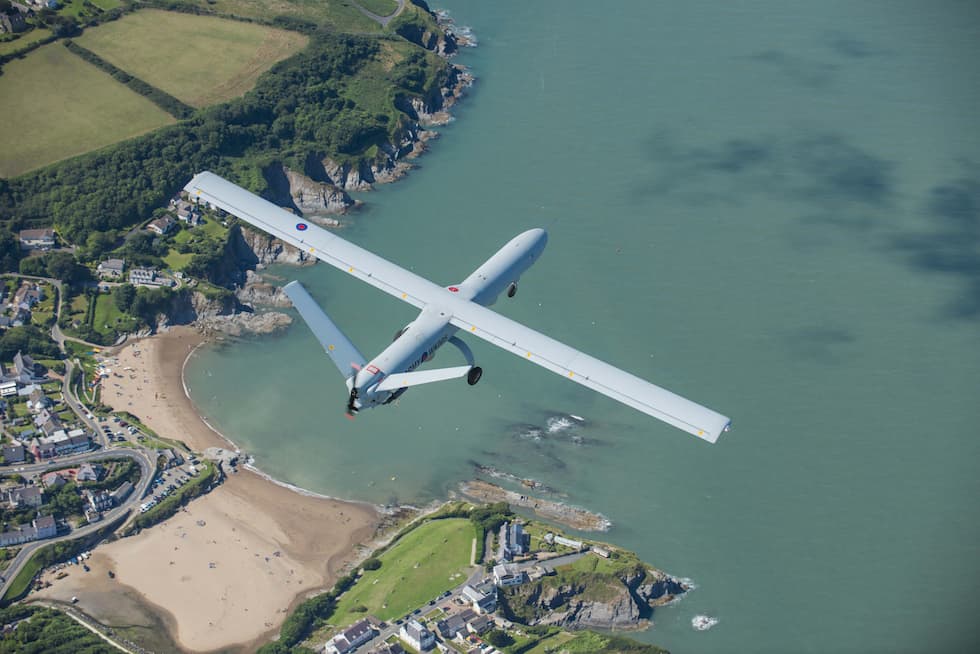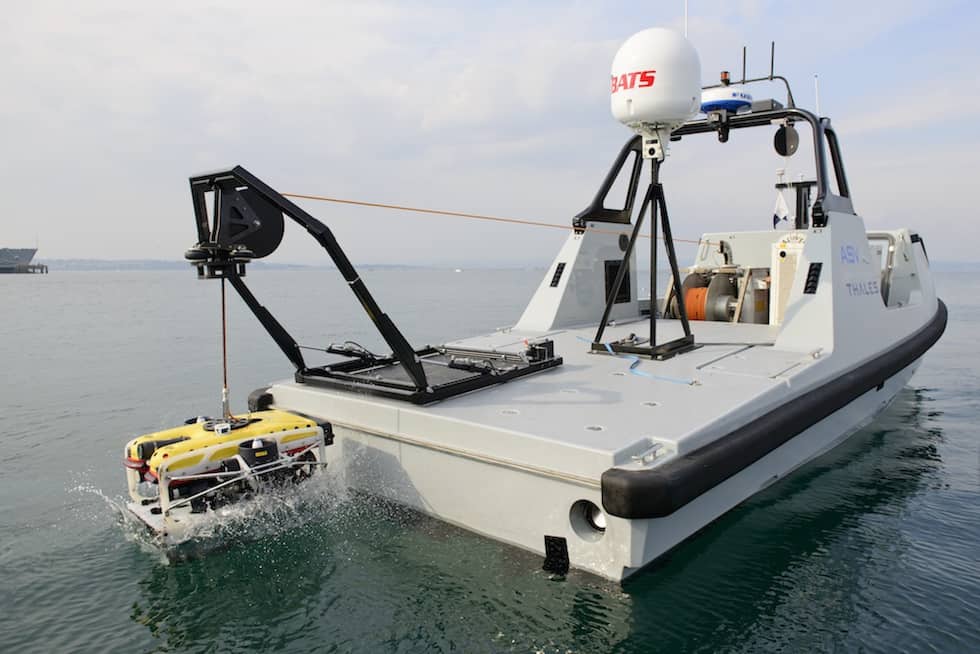The Unmanned Warrior exercise, being held off the coast of Scotland in October, will involve over 50 vehicles, sensors and systems, developed by industry, academia and the military, and is designed to demonstrate the potential of autonomous maritime systems in defence operations.
As part of the exercise, Thales will be deploying its Watchkeeper Unmanned Aircraft System and Halcyon Unmanned Surface Vehicle.
Watchkeeper, already in service with the British Army, will be flying offshore for the first time, operating alongside a Type 23 warship and merchant vessel.

The aircraft, which is fitted with a video camera and powerful I-Master radar, will be used to carry out reconnaissance and intelligence operations, according to Nick Miller, unmanned aircraft systems business capture director at Thales.
During the operation, which will take place over Cardigan Bay in West Wales a week before the main Unmanned Warrior exercise, Watchkeeper will be integrated into a series of exercises.
These will include detecting and tracking small, high-speed potential threats such as jet-skis and rigid inflatable boats (RIBs) up to 150km offshore, as well as supporting landing forces and providing naval gunfire support.
“The intelligence data we pick up using the airborne payloads on board Watchkeeper will be beamed down to a combat management system on the naval vessel,” said Miller.
The data will then be analysed by trained operators on board the vessel. The system will also be connected to MAPLE (Maritime Autonomous Platform Exploitation), a transportable combat management system. The MAPLE programme, which is being developed by Thales, BAE Systems, Qinetiq and SeeByte, will allow multiple unmanned vehicles from different suppliers to be commanded and controlled from a single station.
Meanwhile Thales’ Halcyon Unmanned Surface Vehicle, equipped with the company’s Towed Synthetic Aperture Sonar, will be taking part in the main exercise, off the coast of Scotland.
Halcyon will take part in a number of mine hunting operations, designed to demonstrate the benefits of using autonomous systems in hostile environments, not least in keeping human crews out of harm’s way, said Jason Dey, product line manager for mine warfare at Thales UK.

“We want to be able to show the maturity of technology for remote mine hunting missions,” he said. “At the moment they [Royal Navy] will send an expensive minehunter with 40 or 50 people into the minefield, and this is a way of keeping people out of that minefield.”
During the exercise, Halcyon will tow the sonar through the water, to survey a section of the seabed. To do this, the unmanned vehicle will travel up and down “tracks”, allowing the sonar to comprehensively survey the area.
“We’re focusing on the quality of the images, and how accurately we can determine what kind of things we are getting echoes from on the seabed,” said Dey.
This will create a challenge for the combined autonomous system, as the unmanned vehicle will have to ensure that each time it takes a turn up and down the tracks it does not lose tension in the cable towing the sonar, which could cause it to ditch, said Dey.
It will also need to ensure it then approaches the next track in a straight line.
“We’ll be demonstrating a range of autonomous behaviours for the platform, in terms of what it can do if there is something in its way, or if its communications are lost, and when it does turn, that it can take into account its own behaviour, and what is happening to the sonar that it is towing,” said Dey.




Swiss geoengineering start-up targets methane removal
No mention whatsoever about the effect of increased methane levels/iron chloride in the ocean on the pH and chemical properties of the ocean - are we...